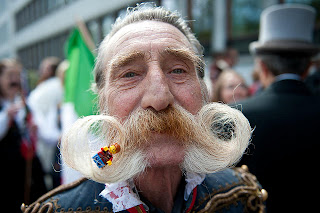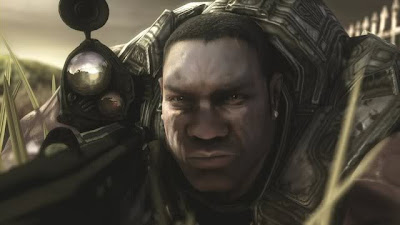The First Moonbeard
Many centuries have passed since then, and the lives of the four sons
have come and gone. The clans still bear their names but the strong family bond
that once existed has all but diminished.
After expanding so quickly Alba and Mani’s work soon came to the
attention of the other Gods, they too wanted sons and daughters. Mimir in
particular wanted children, but for an altogether different reason. He wanted
them as puppets, to do his bidding. He rushed to Alba where he snuck into
Mani’s forge and crafted his own children from pure moon dust. His work was
rushed and hastily thrown into the world. The next day Mimir looked at his work
in the fresh light of day. His panicked and rushed work had created a slow and
feeble race of children. Ashamed of what he had done he left them in the forest
and returned to his exploration of the universe.
Many years passed and the children were not seen of or heard of. Left
unknown in the darkness of the stone forest. Mani’s children continued to grow
and expand, with a fifth clan being formed. This new clan was formed by
settlers from all four of the other clans, and was given the name Stronglegs,
as many of the new settlers had walked for months. They began to construct their own great keep in the middle
of the forest. An impressive stone city, Az’Malk is built into the heart of the
stone forest, a feet of engineering. For many years the clan lived here
increasing the size of the clan and improving the keep.
Then the day cam when Mimir’s children returned, now a deformed race of
ghoulish goblins, they had raised an army and ambushed the Stronglegs at Az’malk.
Evil had not been seen in Alba before, and Mani’s children had no weapons or
armour to defend themselves. Before long the bright stone walls of the keep got
washed red and was over run by the goblins. Anyone who managed to escape rushed
to Mor’Lode for safety.
Upon seeing this, Mani knew he had to do something; he went back into
his forge and began work on helping his defenceless children. Throughout the
night Mani worked in his forge lighting the nights sky.
Urli Strongleg had been one of the few to survive the siege at Az’malk
and escape to Mor’Lode. Mani appeared to Urli in a dream that soon became
legend. In the dream he was told to leave Mor’Lode and go to the home of the
Onyxheart clan, O’girn. There in the mountains he would find Zuntar Kodor
(anvil of dawn) and Nil Tath (hammer of dusk). Mani told Urli that upon his
arrival he would appear to him again and teach him the magic needed to work
such artefacts. Urli was explained that through these magical artefacts he
would be able to raise an army to defeat the goblins at Az’malk.
That day Urli packed up his few belongings and set his course for
O’girn. Urli walked for months, fighting through the snowstorms that ravaged
the Blue Mountains that surrounded O’girn. After much hardship Urli eventually
came across a clearing in the storm, from the centre he could see two shards of
pure white light beaming out. As he rushed towards them it became clear that he
had found what he was looking for. Urli was there for a decade, being taught
the skills of moonsmithing, in which he was taught how to use moon dust to
imbue magical powers into weapons and armour. However at this same time the
goblins became well situated within Alba and had made Az’malk their goblin
capital.
When Urli had learned all he could from Mani he returned to the world in
Ol’girn, his beard now glowed pure white, dyed by the moon dust he had been
learning with. He headed to the clans leader telling him of his travels and showing
him the artefact’s he had made. The King believed in the plan Mani had created
for them, and had Zuntar Kodor and Nil Tath brought to the keep from the mountains.
Urli was given a workshop and students to learn the new skill of moonsmithing.
Years passed and eventually Urli’s students began to develop their
skills and become accomplished moonsmiths. King Oynxheart sent the moonsmiths
to the other clans in an effort to build an army. Urli continued to teach
students in Ol’girn and became a respected friend to the King and an important
member of the clan community. He was eventually given a seat at the top of the
clan elders and referred to as Moonbeard. Moonbeard was a title that stuck and
in later years was given to the best moonsmith, who was easily recognisable as
he is the only one of Mani’s many children to have a pure white beard.


























.png)
